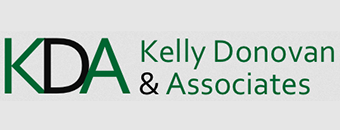What style is best for the LinkedIn “About” section?
The LinkedIn “About” section (formerly known as the Summary) is the one place on your profile that can be thought of as a “freestyle” section–you can write whatever you want without any structure. However, this freedom actually leaves a lot of executives wondering what writing style to use for this section.
If you spend some time looking around LinkedIn, you’ll find that many executives and professionals use wording in the About section that reads like a resume summary, while some use content that reads like an executive bio, and others simply list some keywords related to their career. Then there are those who haven’t even bothered to add this section on their profiles.
My approach (and best practice): conversational and informal
Personally, I always go with a conversational and informal approach unless a client has a strong preference to use a “bio” type format or other approach.
With LinkedIn being a social media platform, using a first person, conversational style helps the reader feel like they’re meeting you versus reading another impersonal resume-style summary of someone’s career.
Coming across as engaging and approachable is especially critical for executives. Coming across as a personable leader will help position you as someone who can earn the buy-in of rank-and-file employees.
I’m certainly not the only advocate of this; in fact, this approach is also recommended by authors of popular books about LinkedIn, as well as leading LinkedIn profile writers, executive resume writers, and career coaches who stay on the cutting edge.
Additionally, this conversational approach is taught in the premier certification program for LinkedIn profile writing: the Nationally Certified Online Profile Expert designation from the National Resume Writers’ Association. I’ve earned this certification and renew it annually–but this was already my approach for many years prior to the creation of the program.
Draw in your readers
If you write your About section in a conversational tone in first person rather than third person, it will stand out. Read 10 profiles all written with terms like “results-oriented” and then read one that feels like the person is talking to you–it’ll be more memorable!
Additionally, after LinkedIn’s 2017 redesign, only the first 2-3 lines of the About section are displayed; to read the rest, a reader has to click “see more.” If those first couple sentences are too dry, your readers might not be motivated to read the rest. Attention spans have never been shorter than they are today.
“You do you”
There’s no right or wrong when it comes to LinkedIn. If you want something more formal written in third person, you can certainly do that. A recruiter who’s interested in a person’s qualifications will want to reach out regardless of the writing style of the About section. The most important questions to consider are: Does it position me correctly? Is it well-written? Have I checked it for errors by reading it out loud?
Should you follow the pack?
Your natural instinct may be to look at peers in your field for examples of what to do on your LinkedIn About section. But remember: just because several peers have handled it a certain way doesn’t mean that approach is necessarily the best or most compelling approach.
The reality is that a lot of LinkedIn users don’t know what the best practices are! Many of the executives I see on the platform haven’t put much effort into their profile and clearly didn’t invest in professional help. However, there are other users who have put in effort and hired LinkedIn profile writers, so keep in mind that recruiters and decision-makers might be comparing you to them.
Also, some of LinkedIn users have an About section that consists of a paragraph written by a robot (more on that below), and robots haven’t yet mastered the art of LinkedIn profile writing.
Should you let a robot write your “About” section?
As AI permeates every aspect of our lives, LinkedIn came up with the idea to offer its users AI-generated wording for their About sections.
This (in theory) solves the problem of LinkedIn users not knowing what to say in the About section, and often not even adding the About section to their profiles because of writer’s block.
You’re probably wondering how this works. The basic gist is that if you have some information on other sections of your profile, like jobs listed in the Experience section and skills listed in the Skills section, the AI will use that information to create a short paragraph.
Unfortunately, these AI-written paragraphs are similar to cliche-filled resume summaries that do little to differentiate the person from other candidates.
When a robot tries to write
Let’s say you’re a VP of Finance. LinkedIn’s robot might say something like:
“Results-oriented finance executive with experience in the technology industry…”
While I applaud the fact that robots can write nowadays (amazing!), let’s unpack the above example:
- That wording doesn’t differentiate you from other finance execs who have worked in tech companies. Also, your headline would probably include this information already.
- If you think “results-oriented” is going to distinguish you, a search for this phrase on LinkedIn produces 67,000 profiles containing that term. It’s an old resume cliche that no longer impresses decision makers (instead, focus on what the results actually are).
- The robot-generated paragraphs are bland, boring, and unremarkable. They aren’t written in the conversational, informal style I recommend. They don’t shine a light on what you’re passionate about in your career.
What’s at stake
However, if you’re a 6-figure or 7-figure executive or entrepreneur, people are forming impressions of you based on your LinkedIn profile. Recruiters, potential team members, C-suite leaders, board members, journalists–the higher you rise in your career, the more attention it will get.
To make your About section engaging, I recommend you take the time to write content that is insightful, compelling, and heartfelt.
Looking for that human touch?
If you find the crafting of your LinkedIn profile to be challenging or simply too time-consuming, I recommend partnering with an executive LinkedIn profile writer (not a robot!) who can ask you powerful questions to draw out your personal brand and intriguing insights–that’s what will make your About section memorable.
I’ve been helping executives with their LinkedIn profiles for more than a decade, and they consistently report to me that they receive more profile views and more relevant recruiter outreach after working with me. A digital native, I stay up to date on LinkedIn, and I maintain my LinkedIn profile writing certification (Nationally Certified Online Profile Expert) through the National Resume Writers’ Association.
I invite you to learn more on my executive resume writing home page, or let’s talk if you’d like to chat about whether we would be the right fit to work together.
This article first appeared on KellyDonovan.com



